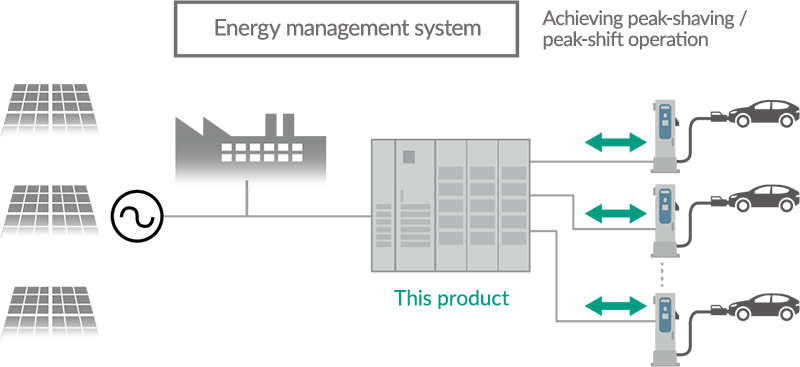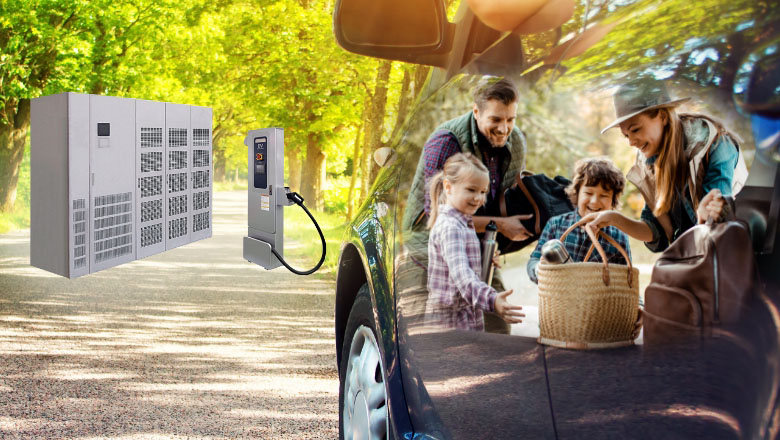

For realization of a carbon-neutral society, global shift from engine vehicles to electric vehicles (EVs) is underway.
However, there is a urgent need to expand charging infrastructure as congestion in charging area frequently occurs in highway and parking areas.
as the number of EVs with large capacity batteries and large commercial EVs is expected to increase in the future, there is a need for EV chargers that meet these quick charging requirement.
Large capacity, Ultra fast, Multi-Port EV Charger developed by Hitachi Industrial Products is capable to satisfy these requirements supporting V2X*1 compatibility enables EVs to be used as storage batteries, and contributes to grid stabilization.
*1: V2X (Vehicle to Everything) is a power transfer technology that connects vehicles with various items for mutual linkage.
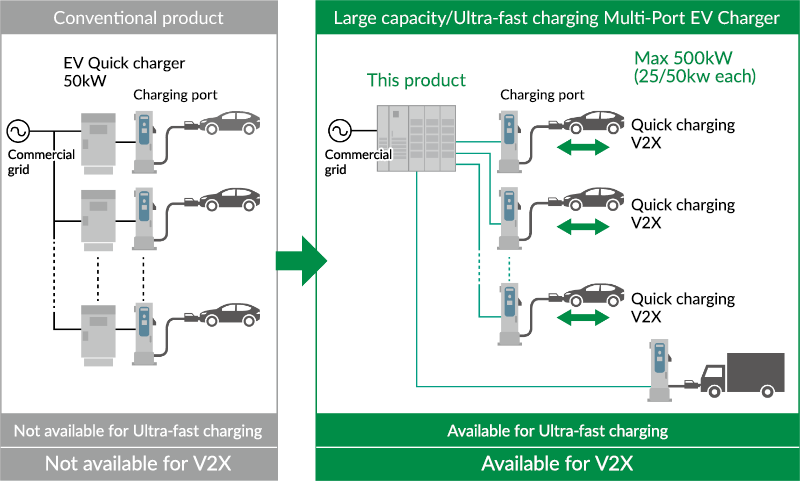
*2: A registered trademark of the CHAdeMO Association for a Quick charging standard for EVs
*3: A next-generation high-power charging standard jointly developed by Japan and China

It complies with the CHAdeMO version 2.0 and version 3.0 (ChaoJi 2) EV charging standards to meet needs for high power charging (super-fast charging and charging of large EVs).
Charging port is scalable up to 20 ports. Various configuration is possible within the range of 500 kW, such as 90 kW x 5 ports, 25 kW x 20 ports and 250 kW x 2 ports with simultaneous charging.
It supports the V2X technology, which enables power supply from EV batteries various energy management.
V2X technology enables power demand control in the facilities.

Two models are available: 250kW and 500kW.
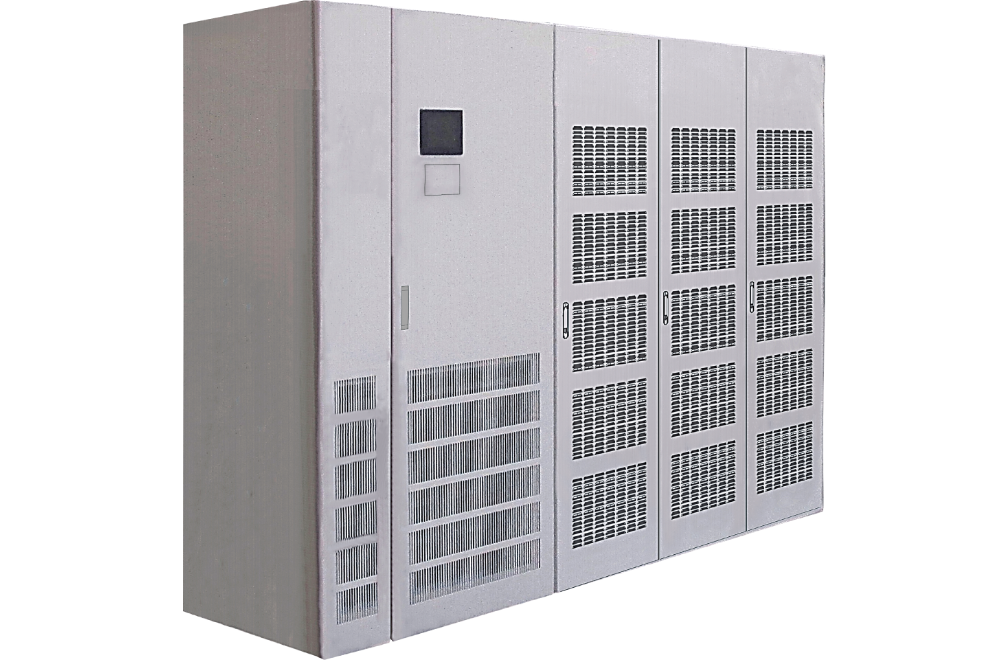
A package for outdoor installation of this product is available.
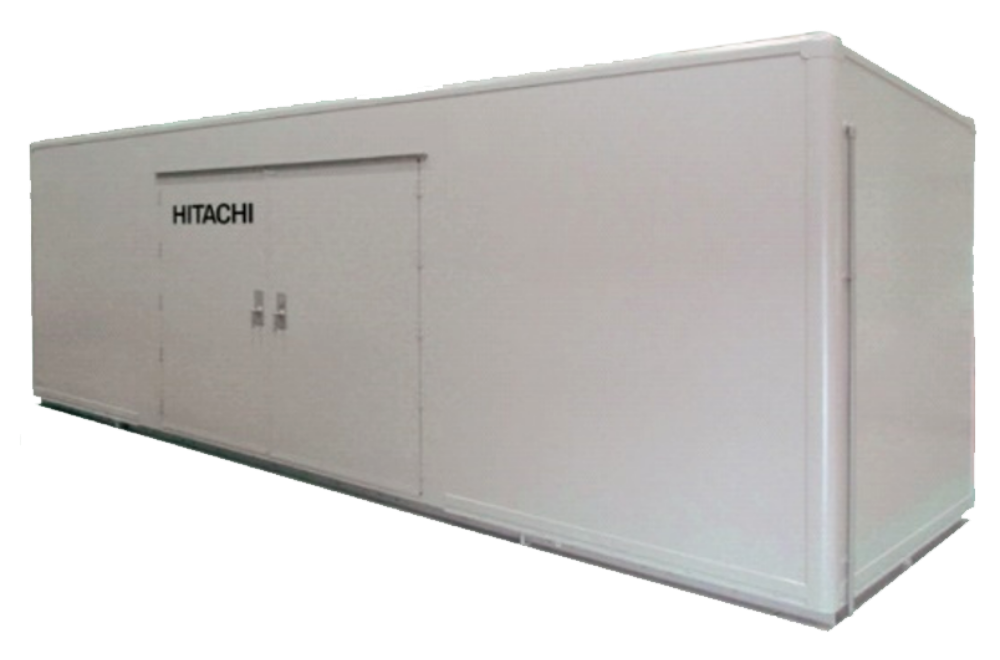
A model suited to the size and the environment of the parking area is selectable.



Reducing CO2 emissions from commuting vehicles, which fall under Category 7 of Scope 3 emissions, will be achieved by installation of this product that supports the connection of up to 80 vehicles and simultaneous charging of up to 20 vehicles on the parking area of workplace during work hours.
This allows employees to introduce EVs without home chargers.
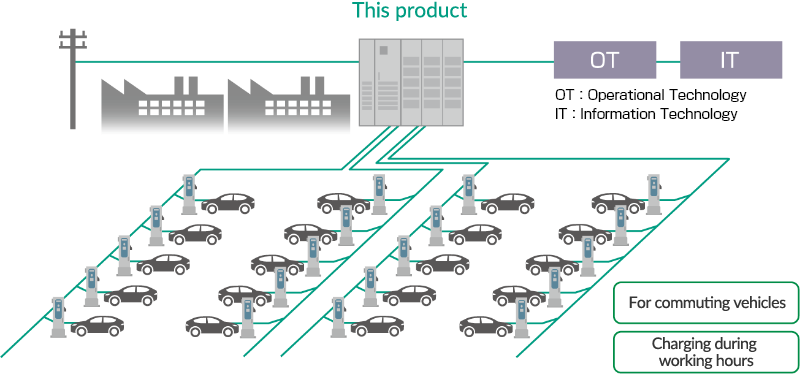

This product allows a maximum of 20 ports (user terminals) to be connected to a single power converter. It connects to and charges multiple EVs simultaneously to support eliminating congestion in charging.
In addition, it supports maximum total output of up to 500 kW for quick charging of EVs with large-capacity batteries and large commercial EVs.
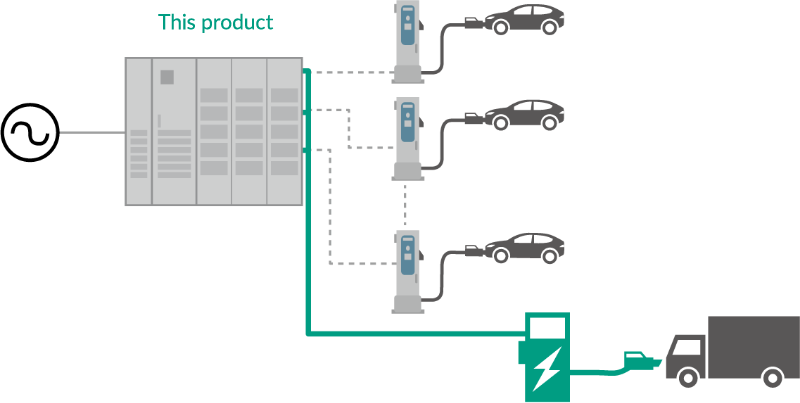

This product supports the V2X technology for utilization of EVs as distributed power sources.
Large capacity EV charger can support peak shaving which reduces power usage during peal power consumption hours, and peak shifting which reduces peak power demand by discharging from EV batteries during peak usage times.
Use of EVs as storage batteries to support energy management at business sites.
